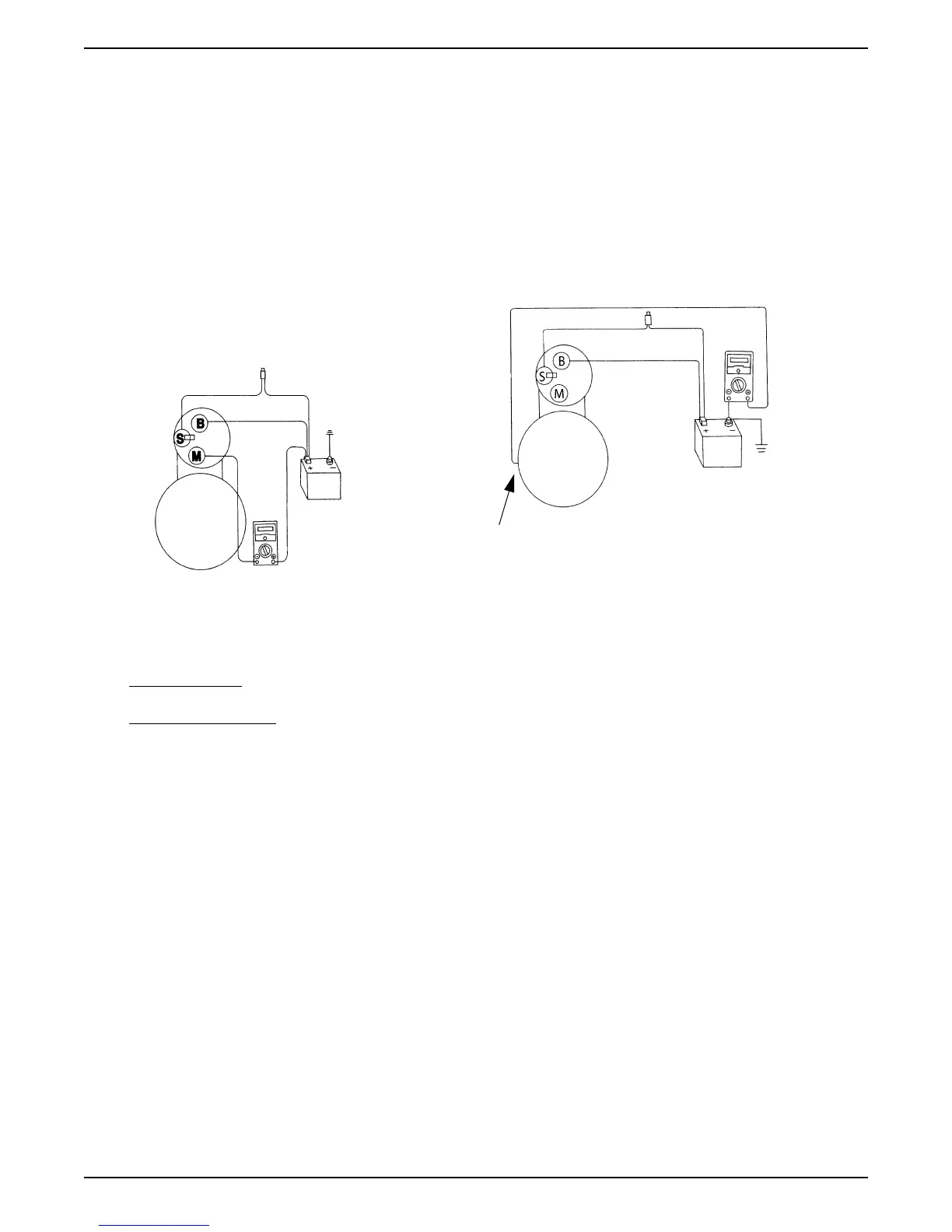DSG-423 STARTER
07-7
Motor Feed Circuit - Voltage Drop Test
Slow cranking is often caused by high resistance in the
battery cables or connections, especially in cold
weather. After all batteries check good and terminals
are clean and tight, check the starter motor feed circuit:
1. Connect a remote starter switch between the starter
“S” terminal and the battery positive (+) terminal.
2. Connect a digital multimeter positive lead to the
battery positive (+) post. Connect negative lead to
the starter solenoid “M” terminal.
3. Engage the remote starter switch. Read and record
the voltage. The voltage reading should be 0.5 volt
or less.
• If 0.5 volt or less
-- refer to starter motor ground
circuit test.
• If greater than 0.5 volt
, indicating excessive resis-
tance, move the negative lead to the “B” terminal
as shown and repeat the test. If voltage reading
at the “B” terminal is lower that 0.5 volt, the con-
cern is either in the connections at the starter so-
lenoid or in the solenoid contacts. By moving the
lead toward the battery and checking each me-
chanical connection point, the excessive voltage
drop can be located. When the high reading dis-
appears, the last mechanical point that was
checked is the concern. Clean or repair as nec-
essary.
Starter Motor - Ground Circuit Check
A slow cranking condition can be caused by resistance
in the ground or return portion of the cranking circuit.
Check the voltage drop in the ground circuit as follows:
1. Connect a remote starter switch between the starter
solenoid “S” termingal and the battery positive (+)
post.
2. Connect a digital multimeter positive (+) lead to the
starter motor housing (the connection must be clean
and free of rust or grease).
3. Connect the negative (-) lead of the voltmeter to the
negative (-) battery terminal.
4. Engage the remote starter switch and crank the
engine. Read and record the voltage reading.
• A reading of 0.2 volt or less indicates a good
ground connection.
• If reading is more than 0.2 volts, clean all ground
connections and retest. If still too high replace
battery negative cable.
NOTE: If the voltage reading is less than 0.2 volt and
the engine still cranks slowly, install a new starter motor.
Remote
Voltmeter
Start
Switch
Remote
Start
Switch
Voltmeter
Starter
Casing

